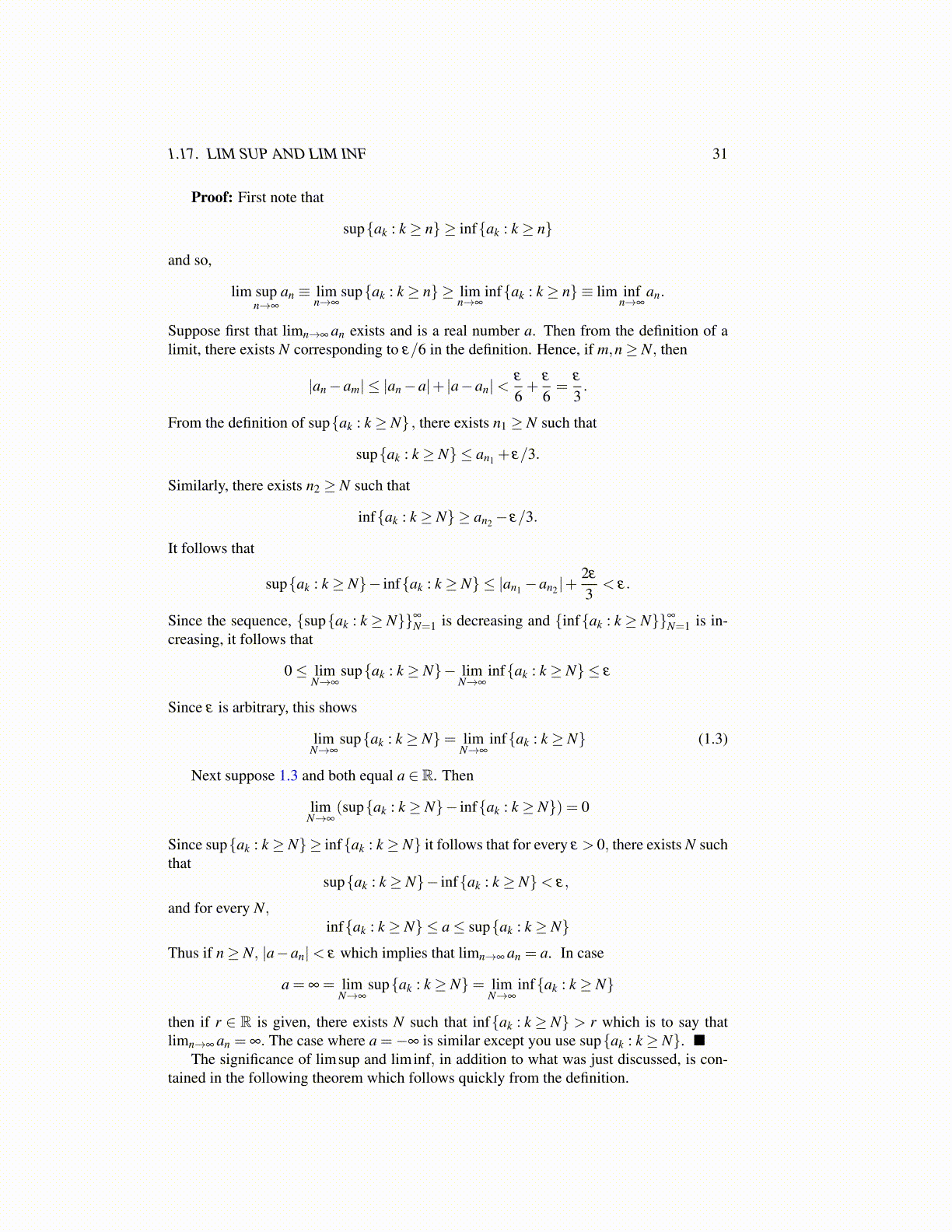
1.17. LIM SUP AND LIM INF 31
Proof: First note that
sup{ak : k ≥ n} ≥ inf{ak : k ≥ n}
and so,
lim supn→∞
an ≡ limn→∞
sup{ak : k ≥ n} ≥ limn→∞
inf{ak : k ≥ n} ≡ lim infn→∞
an.
Suppose first that limn→∞ an exists and is a real number a. Then from the definition of alimit, there exists N corresponding to ε/6 in the definition. Hence, if m,n≥ N, then
|an−am| ≤ |an−a|+ |a−an|<ε
6+
ε
6=
ε
3.
From the definition of sup{ak : k ≥ N} , there exists n1 ≥ N such that
sup{ak : k ≥ N} ≤ an1 + ε/3.
Similarly, there exists n2 ≥ N such that
inf{ak : k ≥ N} ≥ an2 − ε/3.
It follows that
sup{ak : k ≥ N}− inf{ak : k ≥ N} ≤ |an1 −an2 |+2ε
3< ε.
Since the sequence, {sup{ak : k ≥ N}}∞
N=1 is decreasing and {inf{ak : k ≥ N}}∞
N=1 is in-creasing, it follows that
0≤ limN→∞
sup{ak : k ≥ N}− limN→∞
inf{ak : k ≥ N} ≤ ε
Since ε is arbitrary, this shows
limN→∞
sup{ak : k ≥ N}= limN→∞
inf{ak : k ≥ N} (1.3)
Next suppose 1.3 and both equal a ∈ R. Then
limN→∞
(sup{ak : k ≥ N}− inf{ak : k ≥ N}) = 0
Since sup{ak : k ≥ N}≥ inf{ak : k ≥ N} it follows that for every ε > 0, there exists N suchthat
sup{ak : k ≥ N}− inf{ak : k ≥ N}< ε,
and for every N,inf{ak : k ≥ N} ≤ a≤ sup{ak : k ≥ N}
Thus if n≥ N, |a−an|< ε which implies that limn→∞ an = a. In case
a = ∞ = limN→∞
sup{ak : k ≥ N}= limN→∞
inf{ak : k ≥ N}
then if r ∈ R is given, there exists N such that inf{ak : k ≥ N} > r which is to say thatlimn→∞ an = ∞. The case where a =−∞ is similar except you use sup{ak : k ≥ N}. ■
The significance of limsup and liminf, in addition to what was just discussed, is con-tained in the following theorem which follows quickly from the definition.